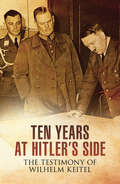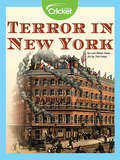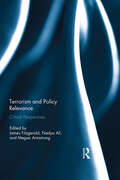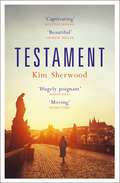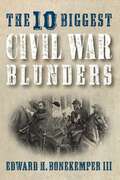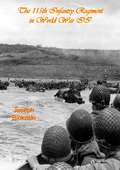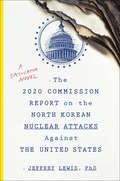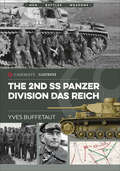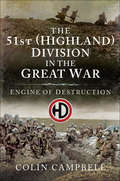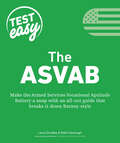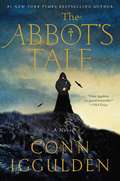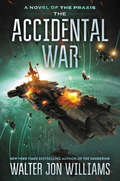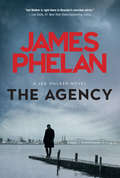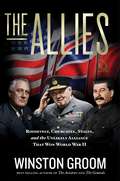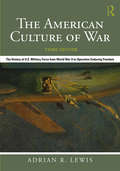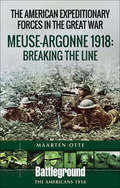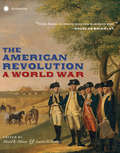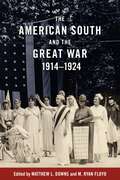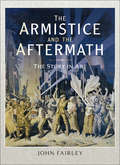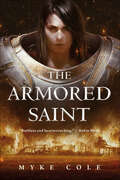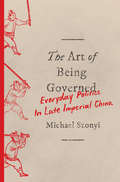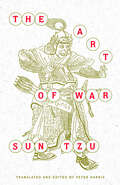- Table View
- List View
Ten Bells Street (The Spitalfields Sagas #1)
by Mary CollinsThe East End of London, 1930. Work is scarce, food is in short supply and there is political unrest on the streets. But in the face of all this hardship, there's always friendship.Becky, Bernie and Rose - three best friends from very different backgrounds - are working hard to establish themselves in pre-war Spitalfields. Becky, the daughter of a Jewish tailor, wants to become a nurse, but her father has more traditional plans for her. Aching to leave the East End and travel the world, Bernie feels trapped by her vast family of poor Irish dock workers. And then there is Rose. Tiny and thin, she lives with her drunken mother and a revolving selection of surrogate fathers who exploit and brutalise them both.But at least the girls have each other and, as Europe begins to drift towards another war, their friendships become ever more crucial as each one of them fights for their place in an ever-changing, frightening, new world. One way or another, love will pull them through . . .
Ten Years at Hitler's Side: The Testimony of Wilhelm Keitel
by Bob CarruthersIn October 1946, Wilhelm Keitel was executed by hanging after being sentenced to death at the Nuremburg Trials. His road to this point was a long and controversial one, from the heady days of the surrender of France, to the eventual fall of Berlin and his subsequent arrest. There were few men better positioned to provide insight in to the minds and workings of the National Socialist Party, and of those a preciously limited amount were held accountable for their crimes. This renders the record of Keitels trial as published here an invaluable historical record that goes some way to providing an understanding of the near incomprehensible crimes committed during the Third Reich.Edited and introduced by esteemed historian Bob Carruthers, this unadulterated record of Wilhelm Keitels trial at Nuremburg is essential reading for all history enthusiasts and an important account of events that truly shook the world.
Terror in New York
by Lois Miner HueyIn a planned conspiracy to burn down major buildings in New York City during the Civil War, eight men of the Confederacy committed acts of terrorism. They attempted to destroy the city and claim it for the South by building a "Greek fire," which is stronger than regular fire because it is caused by chemical reactions.
Terrorism and Policy Relevance: Critical Perspectives
by Megan Armstrong James Fitzgerald Nadya AliThis book explores the interrelationship between terrorism and policy relevance from a range of critical perspectives. In particular, it questions the politics of policy-relevance; that is, it interrogates how epistemological and practical pressures to produce "policy-relevant" research shapes prevalent understandings of (counter)terrorism, and vice-versa. It also reflects on Critical Terrorism Studies’ (CTS) relationship to policy-relevance. Should CTS eschew engagement with policy-relevance and maintain a position outside the orthodoxy, or are CTS scholars uniquely positioned to offer meaningful alternatives to contemporary counterterrorism practices? Read thus, the question of policy relevance is central to CTS’ identity and represents an essential juncture as to how associated scholarship might develop into the future.
Testament: Shortlisted for Sunday Times Young Writer of the Year Award
by Kim Sherwood*Longlisted for the Desmond Elliot Prize * Winner of the Bath Novel Award * Shortlisted for the Author's Club Best First Novel Award *'What a writer. I was totally captivated. Moving and ultimately uplifting' HEATHER MORRIS, author of The Tattooist of Auschwitz'An important and beautifully written novel by a young writer of immense talent. I was deeply moved' Andrew Miller, author of Now We Shall Be Entirely FreeOf everyone in her complicated family, Eva was closest to her grandfather: a charismatic painter - and a keeper of secrets. So when he dies, she's hit by a greater loss - of the questions he never answered, and the past he never shared.It's then she finds the letter from the Jewish Museum in Berlin. They have uncovered the testimony he gave after his forced labour service in Hungary, which took him to the death camps and then to England as a refugee. This is how he survived.But there is a deeper story that Eva will unravel - of how her grandfather learnt to live afterwards. As she confronts the lies that have haunted her family, their identity shifts and her own takes shape. The testament is in her hands.Kim Sherwood's extraordinary first novel is a powerful statement of intent. Beautifully written, moving and hopeful, it crosses the tidemark where the third generation meets the first, finding a new language to express love, legacy and our place within history.
Testament: Shortlisted for Sunday Times Young Writer of the Year Award
by Kim Sherwood*Longlisted for the Desmond Elliot Prize * Winner of the Bath Novel Award * Shortlisted for the Author's Club Best First Novel Award *'What a writer. I was totally captivated. Moving and ultimately uplifting' HEATHER MORRIS, author of The Tattooist of Auschwitz'An important and beautifully written novel by a young writer of immense talent. I was deeply moved' Andrew Miller, author of Now We Shall Be Entirely FreeOf everyone in her complicated family, Eva was closest to her grandfather: a charismatic painter - and a keeper of secrets. So when he dies, she's hit by a greater loss - of the questions he never answered, and the past he never shared.It's then she finds the letter from the Jewish Museum in Berlin. They have uncovered the testimony he gave after his forced labour service in Hungary, which took him to the death camps and then to England as a refugee. This is how he survived.But there is a deeper story that Eva will unravel - of how her grandfather learnt to live afterwards. As she confronts the lies that have haunted her family, their identity shifts and her own takes shape. The testament is in her hands.Kim Sherwood's extraordinary first novel is a powerful statement of intent. Beautifully written, moving and hopeful, it crosses the tidemark where the third generation meets the first, finding a new language to express love, legacy and our place within history.(P)2018 Quercus Editions Limited
The 10 Biggest Civil War Blunders
by Edward H. BonekemperWhat makes the Civil War so fascinating is that it presents an endless number of "what if" scenarios—moments when the outcome of the war (and therefore world history) hinged on a single small mistake or omission. In this book, Civil War historian Edward Bonekemper highlights the ten biggest Civil War blunders, focusing in on intimate moments of military indecision and inaction involving great generals like Robert E. Lee, Ulysses S. Grant, and William T. Sherman as well as less effective generals such as George B. McClellan, Benjamin Butler, and Henry W. Halleck. Bonekemper shows how these ten blunders significantly affected the outcome of the war, and explores how history might easily have been very different if these blunders were avoided.
The 115th Infantry Regiment in World War II
by Joseph Binkoski Arthur PlautOn 3 February 1941, the First Maryland Infantry Regiment, Maryland Army National Guard, was inducted into federal service as the 115th Infantry Regiment and sent to join the 29th Infantry Division. They arrived in England on 11 October 1942, and then were attached to the 1st Infantry Division in preparation for the D-Day invasion. They moved with the 1st Infantry Division from 2 June 1944, and remained with 1st Infantry Division until 7 June 1944, when they returned to the 29th Infantry Division for further operations. Their participation in the Normandy Campaign continued until it was over on 24 July 1944. They immediately moved into the Northern France Campaign on 25 July 1944, which continued until it was over on 14 September 1944.During this period the 115th Infantry Regiment was engaged in one of the war's forgotten chapters, "The Battle of Brest". The Battle for Brest was one of the fiercest battles fought during Operation Cobra, the Allied breakout of Normandy which began on 27 July 1944, during the Battle of Normandy during World War II. The 115th Infantry then started participation in the Rhineland Campaign on 15 September 1944, whereupon the 115th Infantry crossed from France to Belgium and the Netherlands both on 27 September 1944, and entered Germany on 30 September 1944.
The 2020 Commission Report on the North Korean Nuclear Attacks Against the United States: A Speculative Novel
by Jeffrey LewisThis &“brilliantly conceived&” novel imagines a devastating nuclear attack on America and the official government report of the calamity (Eric Schlosser, author of Fast Food Nation and Command and Control). &“The skies over the Korean Peninsula on March 21, 2020, were clear and blue.&” So begins this sobering report by the Commission on the Nuclear Attacks against the United States, established by Congress and President Donald J. Trump to investigate the horrific events of the following three days. An independent, bipartisan panel led by nuclear expert Jeffrey Lewis, the commission was charged with finding and reporting the relevant facts, investigating how the nuclear war began, and determining whether our government was adequately prepared. Did President Trump and his advisers understand North Korean views about nuclear weapons? Did the tragic milestones of that fateful month—North Korea's accidental shoot-down of Air Busan flight 411, the retaliatory strike by South Korea, and the tweet that triggered vastly more carnage—inevitably lead to war? Or did America&’s leaders have the opportunity to avert the greatest calamity in the history of our nation? Answering these questions will not bring back the lives lost in March, 2020. It will not rebuild New York, Washington, or the other cities reduced to rubble. But at the very least, it might prevent a tragedy of this magnitude from occurring again. It is this hope that inspired The 2020 Commission Report. &“I couldn&’t put the book down, reading most of it in the course of one increasingly intense evening. If fear of nuclear war is going to keep you up at night, at least it can be a page-turner.&”—New Scientist
The 2nd SS Panzer Division Das Reich (Casemate Illustrated)
by Yves BuffetautThe Das Reich Division was the most infamous units of the Waffen-SS. Hitler's Schutzstaffel (SS) units were originally paramilitary formations raised to protect the members of the Nazi party, and the Waffen-SS (the armed SS) was founded in 1934 as the SS-Verfügungstruppe. In 1939 the SS-Verfügungstruppe was placed under the operational command of the OKH. During the invasion of Poland the unit fought as a mobile infantry regiment. There were doubts about the unit's effectiveness, but Hitler ordered it be allowed to expand and form its own divisions, but under the command of the army. In 1940 the SS-Verfügungs-Division participated in the invasion of the Netherlands and France. After the Battle of France the SS-VT was officially renamed the Waffen-SS, and in 1941, the Verfügungs-Division was renamed Reich, later Das Reich.In 1941 Das Reich took part in the invasion of Yugoslavia, where its men accepted the surrender of Belgrade. In Barbarossa, Das Reich fought with Army Group Center, in the spearhead of Operation Typhoon and taking part in the battle of Moscow, by which time it had lost 60 percent of its combat strength. It was pulled off the front in mid-1942 and sent to refit as a panzer-grenadier division. Returning to the Eastern Front, Das Reich took part in the fighting around Kharkov and Kursk. Late in the year it was designated a panzer division. In 1944, the unit was stationed in southern France when the Allies landed in Normandy. The following days saw the division commit atrocities, hanging 100 local men in the town of Tulles in reprisal for German losses, and massacring 642 French civilians in Oradour-sur-Glane, allegedly in retaliation for partisan activity in the area. Later in the Normandy fighting Das Reich was encircled in the Roncey pocket by US 2nd Armored Division, losing most of their armored equipment. Das Reich surrendered in May 1945.
The 51st (Highland) Division in the Great War: Engine of Destruction
by Colin CampbellScotland provided two Territorial Force divisions at the outbreak of the First World War, in due course taking their place in the order of battle as the 51st (Highland) Division and the 52nd (Lowland) Division. 1066 and All That concluded that the war was won by the Americans, assisted by the Australians (AZTECS) and some Canadians, and 51 Highlanders. If nothing else, this ironic analysis showed that Major General George (Uncle, sometimes Daddy) Harper was a master of positive publicity and knew its value in building the Divisions image and morale. He commanded the Division from late September 1915 until shortly before the opening of the German Spring Offensive in March 1918, when he was promoted to the command of IV Corps; his name is firmly linked to the 51st.The Division arrived in France in May 1915 and took part in a limited (and unsuccessful) attack in French Flanders in June 1915, which revealed hardly surprising weaknesses in training. The next year was spent relatively quietly on the Somme and, from March 1916, the southern end of Vimy Ridge. Thereafter it fought on the Somme at High Wood and Beaumont-Hamel, at the Battle of Arras, at Third Ypres, Cambrai, faced two of the German spring offensives of 1918 and was then involved in the successful series of allied offensives that ended the war, in the Divisions case starting with an attack with the French and the Italians in the Champagne in July 1918.No history of the Division has been written since Brewshers in 1921. This book aims to cast a more objective light on its activities and to challenge its post war critics. It makes full use of official records and first hand accounts, including those provided by descendants with previously unpublished family records or illustrations. The books main purpose is to pay tribute to a generation that met hitherto unimagined horrors with fortitude, adaptability, resilience and humour and, despite the awful price in lives, broken bodies and minds, carried on until the job was done.
The ASVAB (Test Easy)
by Laura Stradley Robin KavanaghRest Easy with Test Easy!You're excited about your decision to join the U.S. Armed Forces, and you know that your ASVAB scores will determine the course of your military career, so you want to do your absolute best. Well, rest easy because Test Easy makes acing your exam a snap! In this book, you get:A quick assessment to see where you need the most helpStudy strategies to help you do your very bestMath and Science tutorials to get you ready for the Arithmetic Reasoning, Mathematics Knowledge, and General Science categoriesCommunication tutorials to get you ready for the Paragraph Comprehension and Word Knowledge categoriesTechnical tutorials to get you ready for the Assembling Objects, Auto & Shop, Electronics, and Mechanical Comprehension categories3 full Armed Services Vocational Battery (ASVAB) practice tests1 full practice Armed Forces Qualifying Test (AFQT)Specific tips to get you ready for each of the 9 categories
The Abbot's Tale: A Novel
by Conn IgguldenFrom New York Times bestselling Conn Iggulden comes a new novel set in the red-blooded days of Anglo-Saxon England. This is the original game for the English throne. In the year 937, the new king of England, a grandson of Alfred the Great, readies himself to go to war in the north. His dream of a united kingdom of all England will stand or fall on one field—on the passage of a single day. At his side is the priest Dunstan of Glastonbury, full of ambition and wit (perhaps enough to damn his soul). His talents will take him from the villages of Wessex to the royal court, to the hills of Rome—from exile to exaltation. Through Dunstan's vision, by his guiding hand, England will either come together as one great country or fall back into anarchy and misrule . . . From one of our finest historical writers, The Abbott’s Tale is an intimate portrait of a priest and performer, a visionary, a traitor and confessor to kings—the man who can change the fate of England.
The Accidental War: A Novel
by Walter Jon WilliamsBlending fast-paced military science fiction and space opera, the first volume in a dynamic trilogy from the New York Times bestselling author of The Praxis, set in the universe of his popular and critically acclaimed Dread Empire’s Fall series—a tale of blood, courage, adventure and battle in which the fate of an empire rests in the hands of a cadre of desperate exiles.It’s been seven years since the end of the Naxid War. Sidelined for their unorthodox tactics by a rigid, tradition-bound military establishment, Captain Gareth Martinez and Captain the Lady Sula are stewing in exile, frustrated and impatient to exercise the effective and lethal skills they were born to use in fighting the enemy.Yet after the ramshackle empire left by the Shaa conquerors is shaken by a series of hammer blows that threaten the foundations of the commonwealth, the result is a war that no one planned, no one expected, and no one knows how to end.Now, Martinez, Sula, and their confederate Nikki Severin must escape the clutches of their enemies, rally the disorganized elements of the fleet, and somehow restore the fragile peace—or face annihilation at the hands of a vastly superior force.
The Age of Treason: The Carefully and Deliberately Planned Methods Developed by the Vicious Element of Humanity
by R. Swinburne Clymer“‘The books that help you most are those that make you think.’—Theodore Parker [American Transcendentalist and reforming minister of the Unitarian church]“We heartily agree with this, but enlarge upon it: THE MISSION OF A BOOK IS TO MAKE PEOPLE THINK, REASON, ANALYZE, AND ACT ACCORDING TO THEIR OWN CONCLUSIONS.“The present text has all this in mind and in addition, to offer information, which if followed, will be of infinite benefit, especially to Americans, and to humanity as a whole, as well as to expose HORRORS ALMOST BEYOND DESCRIPTION, AND WHOLLY INCOMPREHENSIBLE TO THE AVERAGE SANE MIND. These diabolical methods have already been successfully practiced in many countries. By the frank admission of their advocates, they are general in America, and are to become universal.“The direct impetuses for the present volume are several: First, the frank statements contained in Bertrand Russell’s book THE IMPACT OF SCIENCE ON SOCIETY, 1953 edition, describing what Fichte foresaw would be the common lot of humanity.“Russell is an author accepted by the Intelligentsia everywhere, because the Nobel prize has been conferred upon him, and he has held positions in some of the most popular universities.“The second reason is the ever-increasing number of requests we have received from every section of the country to continue our efforts, and render an unbiased opinion, based on the research of the past several years.”—R. Swinburne Clymer
The Agency (A Jed Walker Series Novel #5)
by James PhelanIt's 2005, and Jed Walker has just entered the CIA. After a distinguished ten years within Air Force special ops, he's re-upped to avoid a desk job. But his first job will move the front line far closer to home--his first mission is stateside. New Orleans, pre-Katrina. Walker is sent on a mission by Harold Richter, CIA field operations legend and trainer of agents provocateur. The task he sends Walker on is a one-way ticket--survive and succeed at all costs. Walker is an off-the-grid, solo, deniable asset. But Walker soon finds out he's not alone. There's a British Agent in place, a savvy MI6 operator named Steph Mensch, and she's been tracking a super-yacht of Russians from Miami to the Big Easy. They're there to buy--and the asking price is huge. Soon, our spies learn that they must work together, and their missions become one and the same. When Steph is taken hostage, the case blows up: no one is who they seem, and soon Walker must take steps that will betray The Agency in order to do what's right for the nation. In a high-stakes game where the winner takes all, he must succeed. But at what cost?Then Walker learns the Russians are there to buy something that was stolen from them during the Russian war in Afghanistan. Walker knows if he doesn't succeed, it's not only Steph and him that will suffer--failure will result in an epic act of global terrorism.As Katrina comes to town to forever change a city and a country, it's clear to Walker that his life as a spy has the potential to shape global events. From Langley to Louisiana, Washington to Moscow, The Agency moves like a hurricane through a treacherous landscape of double crosses, false identities, and enemies old and new.
The Allies: Roosevelt, Churchill, Stalin, and the Unlikely Alliance That Won World War II
by Winston GroomBest-selling author Winston Groom tells the complex story of how Franklin Roosevelt, Winston Churchill, and Joseph Stalin--the three iconic and vastly different Allied leaders--aligned to win World War II and created a new world order.By the end of World War II, 59 nations were arrayed against the axis powers, but three great Allied leaders--Franklin Roosevelt, Winston Churchill, and Joseph Stalin--had emerged to control the war in Europe and the Pacific. Vastly different in upbringing and political beliefs, they were not always in agreement--or even on good terms. But, often led by Churchill's enduring spirit, in the end these three men changed the course of history. Using the remarkable letters between the three world leaders, enriching narrative details of their personal lives, and riveting tales of battles won and lost, best-selling historian Winston Groom returns to share one of the biggest stories of the 20th century: The interwoven and remarkable tale, and a fascinating study of leadership styles, of three world leaders who fought the largest war in history.
The American Culture of War: The History of U.S. Military Force from World War II to Operation Enduring Freedom
by Adrian R. LewisNow in its third edition, The American Culture of War presents a sweeping critical examination of every major American war since 1941: World War II, Korea, Vietnam, the First and Second Persian Gulf Wars, U.S. operations in Iraq and Afghanistan, and the war against ISIS. As he carefully considers the cultural forces that surrounded each military engagement, Adrian Lewis offers an original and provocative look at the motives, people and governments used to wage war, the discord among military personnel, the flawed political policies that guided military strategy, and the civilian perceptions that characterized each conflict. This third edition features: A new structure focused more exclusively on the character and conduct of the wars themselves Updates to account for the latest, evolving scholarship on these conflicts An updated account of American military involvement in the Middle East, including the abrupt rise of ISIS The new edition of The American Culture of War remains a comprehensive and essential resource for any student of American wartime conduct.
The American Expeditionary Forces in the Great War: Meuse Argonne 1918: Breaking the Line (Battleground The Americans 1918)
by Maarten Otte&“An invaluable and extraordinary&” account of the bloodiest battle in American military history (Midwest Book Review). Although the Meuse-Argonne Offensive, which began in late September 1918 and continued through to the Armistice, was not the first major action fought by the AEF, it was the greatest in which it engaged in the Great War. The Argonne was an area that had been heavily fought over, particularly in the early part of the war; its eastern part, towards the Meuse, then became enveloped in the first great attritional battle of the war, Verdun. Maarten Otte gives a background narrative to events before the opening of the Offensive and its development. Taking each of the US corps in turn, he then provides tours that will help the visitor to understand the fighting and the problems that were faced. This opening book on the Meuse-Argonne takes the reader, more or less, to the date when General Pershing handed over command of the US First Army to Major General Liggard in mid-October, a change in command that marked a significant improvement in the American performance as they pushed the Germans ever backwards. The Great War battlefield of the Argonne is marked by numerous physical remains of the war, some fine (some might argue overly grandiose) monuments and by the stunning American cemetery at Romagne, the second largest in the world administered by the American Battle Monuments Commission. There is much to see in a battlefield that has been largely neglected in the decades since the Second World War.
The American Revolution: A World War
by John Gray Larrie D. Ferreiro David AllisonAn illustrated collection of essays that explores the international dimensions of the American Revolution and its legacies in both America and around the worldThe American Revolution: A World War argues that contrary to popular opinion, the American Revolution was not just a simple battle for independence in which the American colonists waged a "David versus Goliath" fight to overthrow their British rulers. Instead, the essays in the book illustrate how the American Revolution was a much more complicated and interesting conflict. It was an extension of larger skirmishes among the global superpowers in Europe, chiefly Britain, Spain, France, and the Dutch Republic. Amid these ongoing conflicts, Britain's focus was often pulled away from the war in America as it fought to preserve its more lucrative colonial interests in the Caribbean and India. The book, the illustrated companion volume to the Smithsonian National Museum of American History exhibition of the same name, touches on this and other topics including overseas empires, economic rivalries, supremacy of the seas, European diplomacy, and more. Together the book's incisive text, full-color images, and topical sidebars underscore that America's fight for independence is most clearly comprehended as one of the first global struggles for power.
The American South and the Great War, 1914-1924
by James Hall M. Ryan Floyd Lee Sartain Matthew L. Downs Annette Cox Fritz Hamer Angela Jill Cooley Kathelene McCarty Smith Keith Phelan Gorman Janet G. HudsonEdited by Matthew L. Downs and M. Ryan Floyd, The American South and the Great War, 1914–1924 investigates how American participation in World War I further strained the region’s relationship with the federal government, how wartime hardships altered the South’s traditional social structure, and how the war effort stressed and reshaped the southern economy. The volume contends that participation in World War I contributed greatly to the modernization of the South, initiating changes ultimately realized during World War II and the postwar era. Although the war had a tremendous impact on the region, few scholars have analyzed the topic in a comprehensive fashion, making this collection a much-needed addition to the study of American and southern history. These essays address a variety of subjects, including civil rights, economic growth and development, politics and foreign policy, women’s history, gender history, and military history. Collectively, this volume highlights a time and an experience often overshadowed by later events, illustrating the importance of World War I in the emergence of a modern South.
The Armistice and the Aftermath: The Story in Art
by John FairleyArmistice Day in 1918 was arguably the most joyous day of the 20th century. As the guns fell silent, crowds celebrated across the Western world.The foremost artists of all nations including Pierre Bonnard in Paris and Gilbert Beal in New York, were inspired to convey the emotions of the historic moment. The Irish painter William Orpen was in Amiens.The tense and difficult process of making the peace ensued. Orpen and Augustus John were assigned as official artists at the Versailles conference. Painters also recorded on canvas the extraordinary closing events of the War, including the surrender of the entire German battle fleet.One hundred years on, The Armistice and the Aftermath brings together in one book a superb collection of the most epic paintings of the era. The result, with informed and perceptive commentary, is a unique record of those momentous days which not only re-drew the world map but, more ominously, shaped the future of the 20th Century.
The Armored Saint (The Sacred Throne #1)
by Myke ColeAn oppressive empire forces a young girl to embrace her destiny in this “ruthless and heartwrenching” epic military fantasy trilogy opener (Robin Hobb).The Sacred Throne trilogy begins! Myke Cole’s first epic fantasy series will enthrall readers. Follow Heloise from her humble beginnings to her world-shaping destiny in this story of religious tyrants, arcane war machines, and underground resistance.In a world where any act of magic could open a portal to hell, the Order ensures that no wizard will live to summon devils, and they will kill as many innocent people as they must to prevent that greater horror. After witnessing a horrendous slaughter, the village girl Heloise opposes the Order, and risks bringing their wrath down on herself, her family, and her village.Praise for The Armored Saint“Brutal and lovely—an inventive and poignant fantasy that’s rich with keen characters, set in a vivid, fascinating world.” —Cherie Priest“A dark fantasy tale with sharp teeth and a hard punch. Heloise is the hero we need, and Myke Cole is the writer to bring her transformation to light.” —Chuck Wendig
The Art of Being Governed: Everyday Politics in Late Imperial China
by Michael SzonyiAn innovative look at how families in Ming dynasty China negotiated military and political obligations to the stateHow did ordinary people in the Ming dynasty (1368–1644) deal with the demands of the state? In The Art of Being Governed, Michael Szonyi explores the myriad ways that families fulfilled their obligations to provide a soldier to the army. The complex strategies they developed to manage their responsibilities suggest a new interpretation of an important period in China’s history as well as a broader theory of politics.Using previously untapped sources, including lineage genealogies and internal family documents, Szonyi examines how soldiers and their families living on China’s southeast coast minimized the costs and maximized the benefits of meeting government demands for manpower. Families that had to provide a soldier for the army set up elaborate rules to ensure their obligation was fulfilled, and to provide incentives for the soldier not to desert his post. People in the system found ways to gain advantages for themselves and their families. For example, naval officers used the military’s protection to engage in the very piracy and smuggling they were supposed to suppress. Szonyi demonstrates through firsthand accounts how subjects of the Ming state operated in a space between defiance and compliance, and how paying attention to this middle ground can help us better understand not only Ming China but also other periods and places.Combining traditional scholarship with innovative fieldwork in the villages where descendants of Ming subjects still live, The Art of Being Governed illustrates the ways that arrangements between communities and the state hundreds of years ago have consequences and relevance for how we look at diverse cultures and societies, even today.
The Art of War: Large Print (Vintage Classics)
by Sun TzuA new translation of the ancient Chinese military classic that is widely admired by military and business strategists—with an introduction that provides sweeping historical context, and notes featuring contemporary commentary on Sun Tzu's wisdom over the centuries.For more than two thousand years, The Art of War has provided leaders with essential tactical and management advice. An elemental part of Chinese culture, it has also become a touchstone in the West for achieving success, whether on the battlefield or in business. This Vintage Classics edition features a brilliant translation by Peter Harris, first published by Everyman's Library in 2018. Alongside the pithy and powerful ancient text, Harris includes: • Notes • A bibliography • A chronology of Chinese dynasties • A map • Extracts from the canon of classical Chinese commentators • An illuminating introduction on the warrior-philosopher Sun Tzu and the role of The Art of War in history and today

